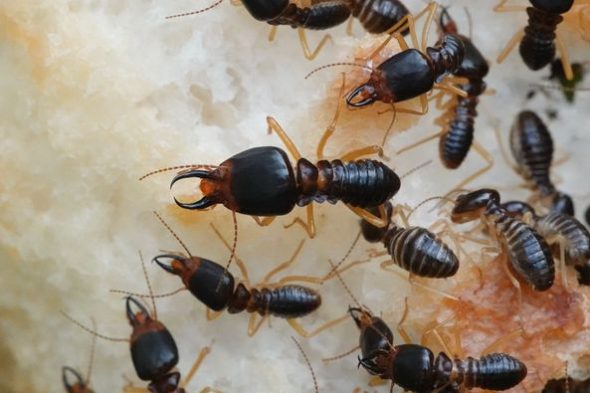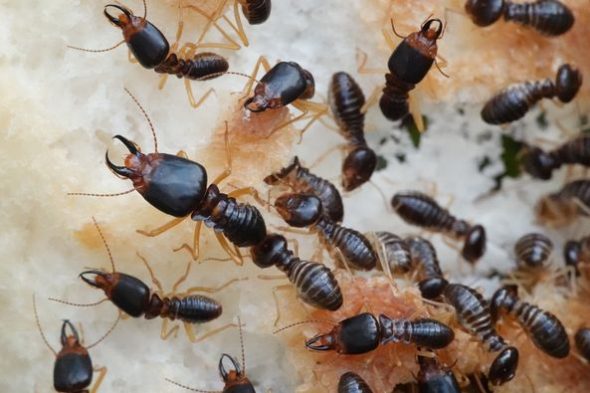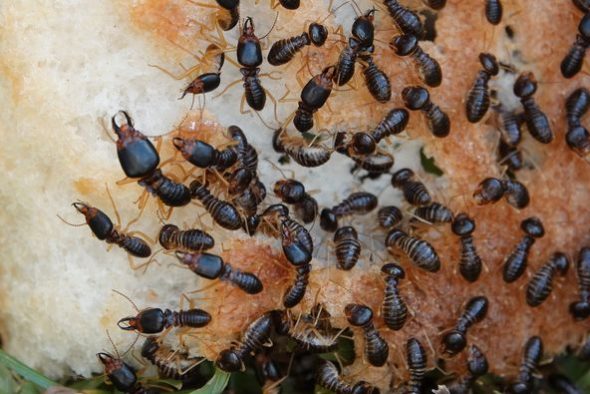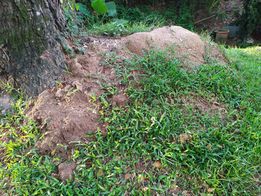These dark-coloured termites (Macrotermes carbonarius) live in mounds made of mud mixed with sand and are visible above ground. Tunnels and chambers which also extend below ground level house developing youngs which are at different instar stages. Termites have incomplete metamorphosis and thus the larvae moult a few times before reaching the adult stage. Soldiers defend the nests and protect the workers which are foraging outside the nests. The workers chew on cellulosic materials like dried leaves, twigs and dead wood and bring these pre-masticated materials back to the workers in the nests. Workers inside the nests cultivate fungi (Termitomyces spp.) inside the chambers. The fungi break down the partially chewed wood that foraging workers have collected. The termites then obtain nutrients by feeding on this fungi pre-digested wood.
The termites throw fungal spores out of the mounds at periodic intervals. Thus, a symbiotic relationship exists between cultivated fungi and termites. The basidiomycete fungi also produce fruiting bodies (a.k.a. mushrooms) which protrude outside the mounds and shed spores into the surroundings, dispersing the spores independently of the termites.






Reference:
1. https://wikitermes.fandom.com/wiki/Macrotermes_carbonarius








